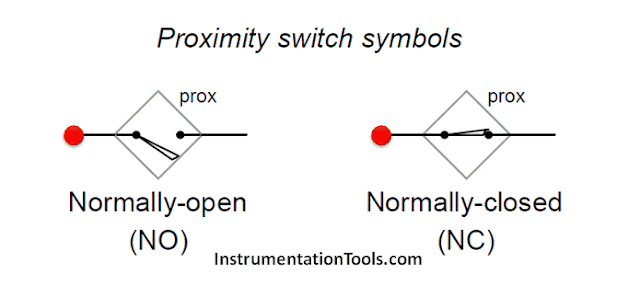A proximity switch is one detecting the proximity (closeness) of some object. By definition, these switches are non-contact sensors, using magnetic, electric, or optical means to sense the proximity of objects.
A proximity switch will be in its “normal” status when it is distant from any detectable object.
Being non-contact in nature, proximity switches are often used instead of direct-contact limit switches for the same purpose of detecting the position of a machine part, with the advantage of never wearing out over time due to repeated physical contact.
Most proximity switches are active in design. That is, they incorporate a powered electronic circuit to sense the proximity of an object. Inductive proximity switches sense the presence of metallic objects through the use of a high-frequency magnetic field. Capacitive proximity switches sense the presence of non-metallic objects through the use of a high-frequency electric field. Optical proximity switches detect the interruption of a light beam by an object. Ultrasonic proximity switches sense the presence of dense matter by the reflection of sound waves.
Proximity Switch Symbol
The schematic diagram symbol for a proximity switch with mechanical contacts is the same as for a mechanical limit switch, except the switch symbol is enclosed by a diamond shape, indicating a powered (active) device:
When a signal received from the sensor circuit, the transistor will be turned ON and the output will be ON. When the object is moved away from sensor circuit, the sensor output is OFF so transistor is OFF and the output will be OFF.
Note: The sensor circuit may contain a LC Resonant oscillator or a mutual induction based circuit. The LC Resonant oscillator generates a designed resonant oscillations continuously. whenever there is any metal object nearby to the sensors, the oscillations may vary and it depends on the object properties. This change in oscillations will be detected and generates an output either High or Low, nothing but object found or not.
Proximity Switch NPN Type



Comments
Post a Comment